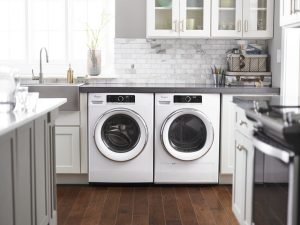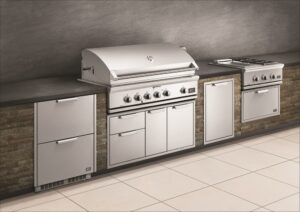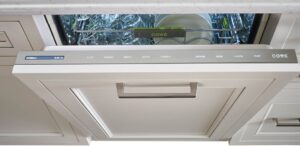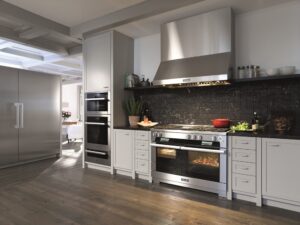Is a Ventless Dryer a Good Choice for Your Home?

It’s estimated that almost 80% of us have a dryer to dry our clothes indoors. A dryer is a modern convenience that most of us rely on, but a traditional dryer may not be suitable for every type of home. A typical vented dryer needs a vent, and installing a vent in many homes is simply impossible without incurring a significant cost or altering a historic building. There is an alternative; a ventless dryer is a compact option that can dry effectively without the need for a vent. In this article we will take a closer look at ventless dryers, are they safe to use? Are they energy efficient? How well will they wash your clothes? Let’s find out.
Are Ventless Dryers Safe to Use?
Many people are concerned that a lack of venting will lead to a buildup of heat that could pose a risk of fire. This is unfounded; a ventless dryer is perfectly safe to use; they are designed to operate safely for years. When you use a ventless dryer, there is no need to remove collected lint from the trap or a vent. This effectively reduces the risk of a fire rather than increasing them, and this makes a ventless dryer safer to use. If you need to dry your laundry indoors and you don’t have an option to install a vent, a ventless dryer is a safe alternative.
Is a Ventless Dryer Energy Efficient?
The short answer is yes, a ventless dryer actually uses less energy when compared to a traditional dryer. A heat pump dryer uses warmed air to dry your clothes rather than warming up cold air, and this significantly reduces the energy needed. Certain models may take a little longer to dry your clothes, but they do cost less to run, and this is noticeable on your energy bills.
Is a Ventless Dryer Right for You?
A ventless dryer is a good choice if you live in a smaller space because it easily fits under a counter or in an available closet. As long as you have a certain level of airflow and access to an electric socket, you can run a ventless dryer. If you run a ventless dryer under a counter, you need to make sure you have an inch or two around the entire unit. If you’re running a ventless dryer in your closet, simply leave the door open when drying. Both of these options will ensure you have sufficient airflow, and there is no need for a special laundry drying room. Many ventless dryer models are stackable, or they could be placed side by side with your washer.
If you use a vented dryer, it pulls the ambient room temperature into the unit; the air is heated, and then it’s blown out of the exhaust along with the evaporated moisture. This needs a hole in a nearby wall to install a vent where the exhaust and moisture can be passed to the outdoors. But, if your home is cold, the air won’t be pre-warmed, and the furnace is going to have to work harder to compensate for the difference. This may seem like a problem for colder months, but it’s also an issue in summer because the air will need to be cooled by your AC system. So, if the dryer has to heat cooled air, use it and then waste it by venting it outdoors, it represents a significant waste of energy and money.
A ventless dryer requires no exhaust; it pulls in cooler air and heats it, but the air is cooled by a heat exchanger, and this causes the moisture in the air to turn to water. This water is collected in a containment chamber located inside the dryer. This process is repeated until the clothes in the drum are dry. When the cycle is finished, the water passes into the drain or in a tray that you can empty. This makes a ventless dryer a great option for many homes with less space or a heat pump installed.
If you’re considering upgrading your dryer, you can explore the options with our online collection of laundry appliances or speak to a home appliance specialist for further advice.
- Designing the Ultimate Outdoor Kitchen: Hestan, Lynx, and DCS Essentials for 2025
- Should You Feature Graff, Dornbracht, or Axor? 2025 Faucet & Sink Trends in Luxury Design
- Dishwasher Buying Guide 2025: Quiet, Clean, and Panel-Ready Options Explained
- Luxury Range Buying Guide 2025: How to Choose the Perfect Pro-Style Range
- How to Match Appliances with Your Kitchen Cabinet Style
- Luxury Kitchen Appliance Packages: Are They Worth It For Beverly Hills Homeowners?
- Built-In vs. Freestanding Refrigerators: Which Is Better for a Luxury Kitchen?
- Top 5 Luxury Kitchen Appliance Packages for Upscale LA Remodels
- Is Panel-Ready the New Stainless? 2025’s Most Stylish Kitchen Appliance Finish
- Top Kitchen Appliance Brands Designers Love in 2025






